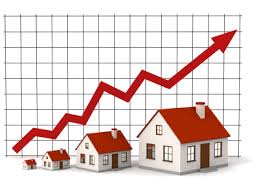“…according to the National Association of Realtors, homeownership rates among those 35 and younger is 36%–the lowest level since 1982…”
NAR is concerned that this figure is so low. Nationally, it may be unusually low. They say there are myths making this so. I think there are good reasons for it. 
- Entry level housing is more expensive than it was for previous generations. (inflation adjusted)
- The need for a college degree for professional employment delays the beginning of full-time earning, and therefore, reduces the capacity to save for a down payment.
- Employment, even for college graduates, took a hit during the recession. This has caused a delayed start to careers of young people who graduated from college after 2006.
- Student loan debt is handicapping would-be house hunters because their overall debt is too high to qualify for a mortgage.
I know the market here. I work with many first-time house hunters. I talk to others who are thinking about house hunting. It is rare here that someone under 35 has the financial wherewithal to buy, unless they have inherited wealth or are getting gifts toward their purchase. The surprise to me is not how few, but how many people under 35 own houses and condos in America.
One reason I see so few young buyers is that, generally, urban markets have higher rates of rental housing and fewer owners. Rural areas have much higher rates of ownership. (Think about it, there are few apartment buildings in rural towns. People buy or they don’t move to town.) Some suburban areas are rich in available rental housing, some are not. So, ownership rates in suburban areas varies, too. Also, many urban markets — particularly on the coasts — are highly inflated. This inflation has compounded since 1982. Housing cost inflation has far outstripped income inflation.This double-whammy has kept younger buyers on the sidelines.
There was a recession, but prices have rebounded back to peak in this area. Here’s a very quick survey of prices on entry level housing two towns in our area:
Somerville 2-bedroom condo, 800-1200 SF (rounded to the nearest $1000)
1995: $113,000
2000: $251,000
2005: $361,000
2006: $350,000
2007: $335,000
2008: $337,000
2009: $346,000
2010: $338,000
2011: $344,000
2012: $366,000
2013: $398,000
Arlington 3-bedroom house, 1200-1500 SF (rounded to the nearest $1000)
1995: $206,000
2000: $312,000
2005: $461,000
2006: $438,000
2007: $430,000
2008: $435,000
2009: $430,000
2010: $428,000
2011: $460,000
2012: $461,000
2013: $510,000
I didn’t include 2014 in the data above because the year is only halfway through. Prices tend to be higher in the spring, so the average sale prices are higher than I expect they will be after the summer and autumn sales are included. This data is average sale price, from MLSPIN.
As a buyer’s agent, I am not bemoaning the reduction in younger buyers. They started their careers in a recession, and it is rational for them to be cautious. Those who plan to stay in this area may (or may not) choose to buy their residence. Since it is not a good decision to buy for a short term (less than 5-7 years), I would prefer that any buyer wait until they know that they intend to put roots down in the Boston area.
